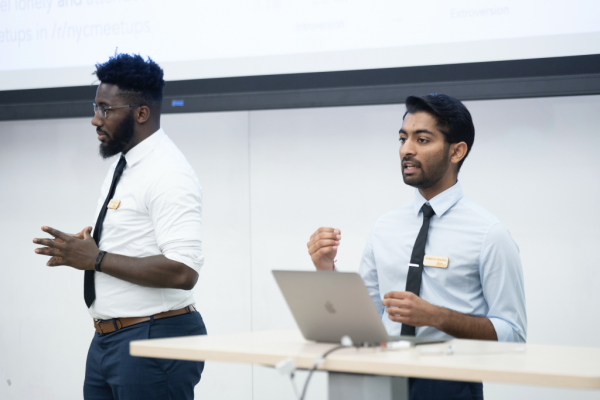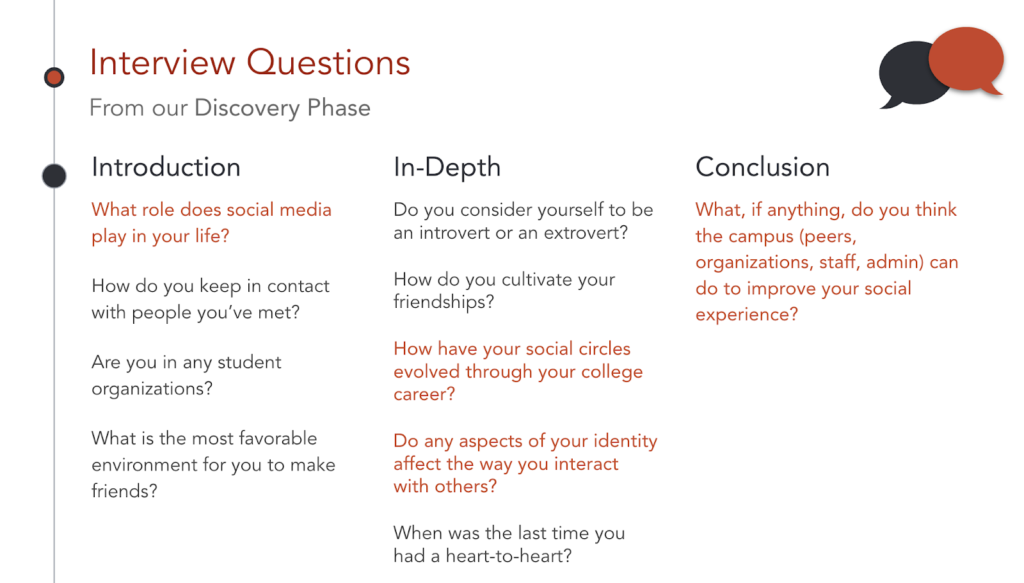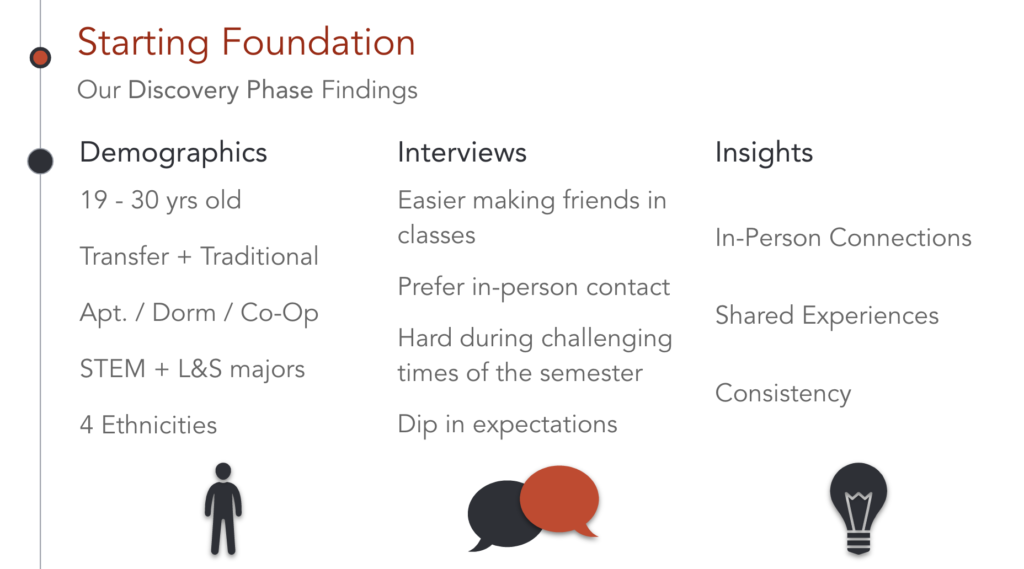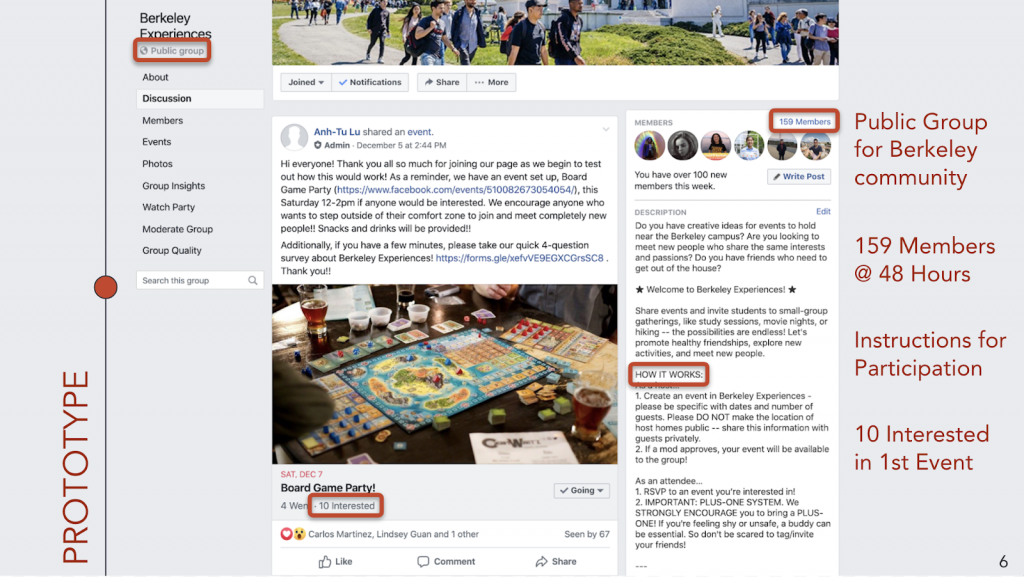The Social Isolation Project: Berkeley Experiences
Member Institution
University of California, Berkeley
Case Study Lead(s)
Nseke Ngilbus, Anubhav Shankar, Lindsey Guan, Anh Tu-Lu
Project
Berkeley Experiences, which aimed to combat social isolation on college campuses
Executive Summary
The Social Isolation Project is an initiative implemented using social media and event planning to tackle college loneliness and to create a safe space where students can host and engage with social events designed to foster new and existing friendships.
This project’s goal was to mobilize students who want to meet new people and encourage event attendees to bring their friends, thus reaching out to socially isolated students. The team focused on surveying the student body and conducting outreach via social media to create engaging events that reduce feelings of social isolation. Adding to the existing communities on Facebook that are only available to UC Berkeley affiliates, this space was meant to exist as a group called “Berkeley Experiences,” where students could create unique social events and invite new students to them.


Problem Identified: College loneliness caused by academic stress and lack of social support to maintain a healthy balance between work, school, and social life.
Students from a wide range of backgrounds in the Berkeley Fung Fellowship Program were assigned the broad topic of social isolation as a problem to tackle. However, student teams were given the liberty to tackle the problem from any angle they desired. By attending a presentation by nonprofit Hopelab, the Berkeley Experiences team learned that “80% of those under 18 years of age reported feeling lonely sometimes,” which accompanies physical and mental health risks. The team felt that this was a problem that was close to home, as “within college campuses such as Berkeley, these risks can be intensified, as students often feel stressed about academics while not having the social support to maintain a healthy balance between work, school, and social life.”
Research Question Identified: How might we foster new and existing friendships between college students?
The Berkeley Experiences team received an initial introduction to the problem of college-age social isolation and feedback on midterm deliverables from Hopelab, a “social innovation lab focused on designing science-based technologies to improve the health and well-being of teens and young adults.” This midterm deliverable presentation consisted of two possible projects implemented via social media to address social isolation: Berkeley Experiences, a community event platform, and Berkeley Studies Together, a page that connects students to study together in public spaces. Feedback from Hopelab in part guided the team to pursue the former idea rather than the latter.
The team also met with community groups such as Stiles Hall, a Berkeley-based nonprofit dedicated to supporting diverse and low-income youth through their education, as well as Berkeley’s Fannie Lou Hamer Black Resource Center before deciding on which path to pursue. Insights from these conversations were that study-centered events are not a great way to reduce social isolation because students under academic pressure may not want to interact while studying, making bond-forming conversations unlikely even if they do agree to attend a group study event.
By posting on Reddit, the team was also able to connect with the organizers of the NYC Meetups subreddit, who had conducted a similar survey of social isolation rates in the past and also worked towards creating community engagement events to address this problem in the New York City area. This collaboration was integral to validating the Berkeley Experiences’ team’s idea.
The team began with a three-week long Discovery Phase of problem-framing and ideation where each member brought their experiences to the table by discussing the social isolation they noticed peers experiencing in their own lives, and the methods that have been effective in addressing it. In this phase, the team conducted preliminary interviews with 10 UC Berkeley students from a demographically diverse group of backgrounds to arrive at preliminary insights to guide their ideation.
The following questions were asked:

Key preliminary insights gathered from these in-depth interviews were:
- Students prefer in-person connection over virtual introductions if possible. For example, students stressed that class provided a natural in-person context to meet other students on a college campus. Hence, academics, dorms, and extracurricular activities can form the foundations for one’s initial social network when starting college.
- Socialization can fluidly occur by bonding over shared experiences. Respondents stated that meeting people with “shared culture, experiences, and principles,” as well as “being inspired by passionate and driven friends,” made them more likely to bond. However, they also stressed that a challenge to meeting students with shared experiences is that many opportunities for shared socialization have barriers-to-entry that encourage mainly extraverted students — for example, students cited the intimidation of club recruiting as a concern in accessing these communities.
- Consistency is key in forming and maintaining new sustainable friendships. Students stressed that while friendships may be made more easily at the beginning of one’s college career, the dip in expectations for making connections after the first semester and the lack of connections during challenging parts of the semester exacerbate loneliness by placing calendar-based barriers to regular, stress-free socialization with new acquaintances.
Based on these insights, the team focused on rapid-prototyping by storyboarding the experience of a Berkeley student experiencing social isolation and attempting to envision an app or social media-based intervention that would allow for engagement with other students through community events.
Before continuing prototyping in more detail, the team felt that they had to understand the nuances of social isolation at UC Berkeley in particular. So, the team conducted a survey across UC Berkeley community Facebook pages by posting on the Overheard at Berkeley and UC Berkeley Confessions pages, which both reach over 20,000 students daily. Out of 72 respondents, 64% stated that they often feel lonely, 25% stated that they often meet people at events, and 32% stated that they want more school-organized events to facilitate this social interaction. In long-form answers, students responded that they want “more student-to-student communication channels with moderators who facilitate discussion,” and want the campus community to “host more events,” and to, “create conversations…in groups online to get more people involved or talking.”

Crucially, the Berkeley Experiences team noted that there was no single demographic that seemed to be alien to the experience of campus loneliness. The team noted that, “throughout all of our interviews and surveys, we didn’t see a specific correlation between certain demographics and loneliness,” and thus, they believed “that a solution which everyone could benefit from would foster a greater sense of community throughout campus without singling out a specific group.”
Understanding Past Projects
The team decided to focus on creating a platform that could engage Berkeley community members through the creation of small-group events that would be inclusive to all. This idea was validated by the effectiveness and popularity of the subreddit r/NYCMeetups on the Reddit platform that attempted to do the same thing. While planning out their own social media-based community engagement platform, the Berkeley Experiences team kept insights from NYC Meetups in mind, including that the platform was effective at encouraging friendship development through shared experiences and interests and that safety is a key concern for those attending meetups given the anonymity of Reddit accounts. Below are the findings derived from survey results of /r/NYCMeetups users that were shared with the Berkeley Experiences Team.


In order to understand what went wrong, the team decided to follow-up with the 10 individuals who RSVP’d to ask them why they didn’t decide to show up. Responses revolved mainly around logistics: rainy weather, the ongoing finals week, and last-minute marketing of the event. While these basic logistical insights were key, they also highlighted another point to the team: that social isolation cannot be solved merely by creating an event and expecting people to join; the college social isolation experience is such that one may come to feel alienated from new social interactions altogether.
Based on this outcome, the team realized that social isolation interventions must be strategic and consider the barriers to entry and dis-incentives at play and plan ahead to mitigate them — if socially-isolated individuals are worried about meeting people alone, perhaps market the project to their outgoing, extraverted friends and encourage them to bring less-social friends along. If exams and academic pressure could be used as an excuse to avoid social interaction, ensure that social interaction events are announced much earlier and planned at a comfortable time in the quarter. The team presented these insights and their prototyping process to the Fung Fellowship cohort at the end of the semester.
Strengths of the team were clear in the prototyping and ideation process. By coming from a diverse range of disciplines, demographics, and student experiences, the team was able to draw upon different lenses of the social isolation experience at Berkeley. The team emphasized that in order to understand the social isolation experience thoroughly for a specific community, one needs to be fully immersed in it; by having different backgrounds, the team was able to get a more holistic understanding.
The team was open to collaboration and thus able to leverage partnerships and conduct outreach for mutually-beneficial data sharing. By sharing their project and survey on Reddit, the Berkeley Experiences team was able to meet another research team working on the social isolation experience in New York City. The two groups were thus able to compare survey findings, share data, and validate findings.
The team was able to turn failures into best practices and share their insight outwards in a transparent manner. Despite struggling with initial event attendance, the team continued working on their project, aiming to get feedback from those that did not attend the event to see where hurdles lied. By following-up and being honest about difficulties, the team was able to share best practices with their cohort that could be invaluable to future projects.
Despite best efforts of the team, on reflection there were critical weaknesses in the project’s implementation, which the team had to work to address. Reflecting back on the outcome of the project, the team realized that seemingly-insignificant logistical details (such as the project launch date during the semester) could make or break the project’s chance at success. The team states that they wish they “had anticipated the logistical challenges of prototyping on a college campus schedule, and would have introduced the topic to the Berkeley ecosystem a lot earlier, at least a month before midterms. That way, students may actually have had a chance at participating in these new engagements,” or at least the team would have had the opportunity to test out their prototype in a social environment unhindered by academic pressures.
The team remarked that social engagement projects such as this one cannot be universally applied effectively, since social isolation is different for each person and every community, team members remarked. Looking back, the team questions whether this kind of solution, based on interacting over shared experiences, would be suitable for members of different populations that had entirely different backgrounds and experiences. Inherently, by working on this kind of project, interviewing a finite number of students, and having certain preconceived conceptions of the social isolation experience, certain demographics may be left out from the picture.
For example, the team remarked on the particular difficulties of engaging the transfer student community. They mentioned that “there’s an age barrier, an alienating feeling…as a transfer student, you don’t have a lot in common with students. Those little disconnects really highlight a bigger issue: how does a student between the ages of 18-21 fully comprehend the issues that someone living off-campus, or someone over 25, or someone with a different background entirely undergoes?”
The team remarked that it is crucial to think about forgotten populations that are left out of the picture while prototyping. But it also may be challenging and ineffective to target the entire community with one homogeneous initiative.
- Put yourself in the shoes of your interviewees. Problems as intimate as social isolation make the interviewing process sensitive and potentially intrusive, so interview preparation was key to ensure a respectful and comfortable environment for those offering to share their experiences. The Berkeley Experiences team discussed that, with social isolation, “you have to walk the line of being insensitive to get information. But you can tell people are uncomfortable since social isolation is such a touchy subject.” To minimize this discomfort, the team underwent compassionate interviewing workshops; most of all, the team emphasized that they would not ask questions that they themselves would not answer as respondents or that they would not feel comfortable asking a fellow team member. The team also emphasized the importance of practicing interviewing beforehand to ensure that questions were worded fluently and respectfully, and to encourage moments of silence for the respondent to think before answering immediately.
- Consider limiting the target audience of your project, and being realistic about what you can achieve in a semester-long class. The Berkeley Experiences team emphasized that they “couldn’t focus on all communities at once,” as they just didn’t have the “personnel, time, and perspectives” to understand the plight of all communities affected by the problem. Thus, instead of claiming to provide a universal solution, the team focused much of their efforts on first, understanding the problem within their own community through interviewing students and community groups, and second, prototyping with a low-stakes platform in order to gain more insight on the problem. Instead of marketing their project as something it was not, the team attempted to make a small but valuable contribution into understanding the problem of social isolation on campus.
- Strategic team formation by educators might encourage team diversity over natural pairings of like-with-like. A member of the Berkeley Experiences team stated that “I think [the team pairing] worked well because it allowed us to work with students that we would not have felt comfortable otherwise… we would have just worked with our friends or students that looked like you or shared the same majors. Our team had a diversity of races, backgrounds, and expertise; we leveraged this in every phase of the design process and delivered a great project” as a result.
- When conducting a project-based class that involves broader community participation, it is crucial that educators familiarize themselves with campus schedules that may form logistical hurdles. The Berkeley Experiences Team noted that due to the nature of the class being a single semester and their chosen final prototyping period occurring during finals week, they did not get a clear and accurate picture of engagement on their platform during a regular week in the semester. Encouraging students to prototype at other times by providing a sample timeline with benchmarks may encourage team planning around these logistical hurdles.
Projects that attempt to match individuals to address social problems such as campus isolation inherently involve some amount of risk to participants by encouraging them to share information with each other or meet others in-person. How can teams focus on creating a safe and inclusive environment for social interaction while mitigating this risk when translating virtual participation to a real-life forum?
